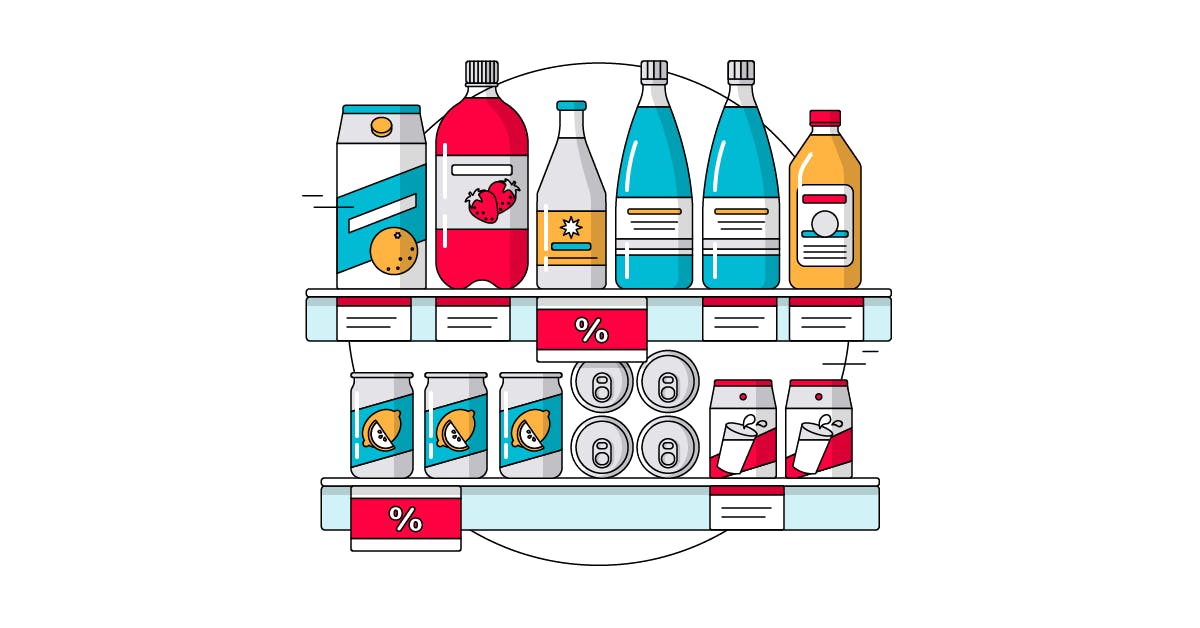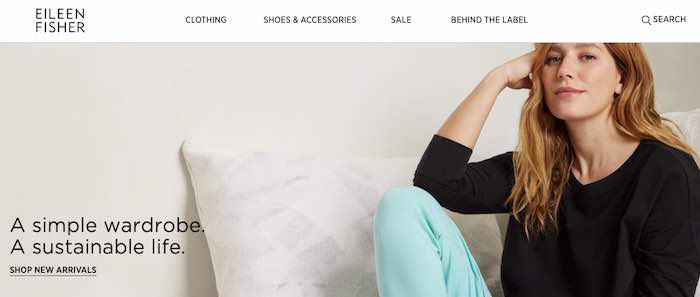
The company jumped 16 places in the Top 75 list for 2020, following a 63.3% growth in brand value change since 2019, settling at number 18. Its online-only formula, unlike other brands in the sector which also have brick-and-mortar stores, places it in an excellent position for growth through digital innovation. According to the report, demand for its services during the peak of the pandemic was at 10 times it usual level for the time of year.
US ecommerce sales for retail giant Walmart rose 37% year-on-year in Q1 2021, and 49% across its international markets, according to a financial statement.
September 2021 UK online grocery sales at lowest since May 2020, while average basket size falls
Having experienced huge acceleration over the past 18 months, the health, beauty and personal care product category is expected to see even more rapid growth over the course of the next five years, WARC reports. Its sister company, Edge by Ascential, has revealed that sales of such products are expected to grow three times faster in online settings than they are in in-store settings by 2026.
Others that have seen particularly fast growth also fall within the food category – Deliveroo, growing by 40% in brand value change in 2020, made number 29 on the list, while Just Eat grew by 19%, placing it just below Ocado at number 20.
Find out more from Kantar.
If the predicted 12.1% compound annual growth rate is achieved, it would mean that ecommerce could account for 26.8% of total retail sales for the vertical. For comparison, ecommerce is expected to account for 19.5% of health, beauty and personal care sales by the end of this year as Covid-19 maintains an influence on shopping habits.
Walmart’s US ecommerce sales rose 37% year-on-year in Q1 2021
Consequently, total grocery sales fell by 1.9% year-on-year during the 12 weeks to mid-September, but remain much higher than before the pandemic began(+8.7%). However, footfall is rising, with supermarkets seeing the highest number of in-store customers all year (outside of Easter) during the first week of September.
Across online and offline channels, shoppers spent £1 billion more with supermarket brands than they did during the same period last year, with a 23% rise in vegan products purchased as families took part in Veganuary.
For more stats, see the following articles:
Doug McMillan, CEO of Walmart says he expects many consumers to resume shopping in person, which could impact the spike in ecommerce growth moving forward: “In the U.S., customers clearly want to get out and shop… We anticipate continued pent up demand throughout 2021.”
59% of UK grocery shoppers are more price sensitive than they were before the start of the pandemic
These figures are despite of last-minute restrictions placed on holiday gatherings in large areas of the UK. This appeared to have caused some consumers to hold back on their spending over the last two weeks leading up to Christmas, buying less traditionally festive foods such as steak, which saw sales up 57% during that fortnight, perhaps as a last-ditch alternative to Christmas dinner. Meanwhile, sales of confectionary rose just 2%, reflecting fewer occasions for socialising and gifting this year than in previous years.
Vodafone came out on top in the top 75 most valuable brands list, followed by HSBC, Shell, BP and BT, despite all of these brands measuring double-digit declines in brand value since 2019. In fact, just 10 brands out of all 75 experienced growth overall, highlighting the massive impact Covid-19 has had on the majority of verticals. The rest saw declines or flat growth or were new to the list in 2020.
Ecommerce sales of this product category are predicted to reach 8.4bn by this time, at a compound annual growth rate of 12.1% versus just 3.3% for store-based sales. The anticipated market value for health, beauty and personal care at the end of 2021 is 2.3bn.
‘Our annual online sales have already exceeded £6bn, boosted by increased demand as a result of the Covid-19 pandemic,’ the statement revealed, ‘We plan to continue this growth whilst constantly innovating to improve efficiency, for example through the roll-out of urban fulfilment centres (UFCs) and continued improvements in our existing manual picking and delivery operations.’
Online share of UK grocery shopping reached record 14% in January 2021
Furthermore, despite the disruptive effects of the pandemic and resulting uncertainty for customers, the company also stated that it had received ‘leading customer service metrics’ in its joint venture with M&S foods. Q3 2020 analysis from Sobeys, as cited in the results, revealed on-time delivery rates of 98.6%, a 99.6% basket accuracy upon delivery and an overall Net Promoter Score of 87%.
But convenience is not the only new habit that grocery shoppers have picked up since March 2020. A further 55% of respondents said that they have become increasingly more mindful of purchasing locally sourced produce as they endeavour to make more sustainable choices.
A combination of increased in-store spend and a buoyant online grocery business has resulted in Tesco revising its full-year revenue outlook upwards to £2.5-2.6 billion.
July 2021 saw year-on-year UK sales growth for online groceries falling for the first time ever
This growing gap between physical and online sales within the beauty sector demonstrates an increased need, as first identified during the pandemic, for accurate and seamless virtual try-on experiences for consumers. While some retailers have recently made steps in this area, more innovation and investment is required to allow customers to feel confident in making purchases of products that typically need to be sampled in real life.
Nearly one half (49%) claim to have switched to cheaper own-brand products since the onset of coronavirus, while just over one in five (22%) continued to shop their preferred branded products. However, 60% of those surveyed now say they are more conscious of, and likely to take advantage of, promotional offers in order to make the most of their budgets.
Tesco maintained its momentum in online grocery sales, which grew a further 2.3% (like-for-like) in the six months to August 2021, against a then record-breaking H1 2020. When pitted against pre-pandemic results two years ago, this growth rises to an impressive 74.1%.
Data reveals click and collect and online grocery shopping among online shopping habits here to stay
The sharp increase in the retailer’s international ecommerce earnings was perhaps the most surprising figure of all, given its recent divestments of Asda in the UK and Seiyu in Japan. Meanwhile, consistent growth in its US online revenue for the quarter has meant Walmart’s ecommerce sales in the region have more than doubled in the last two years.
So far, just 21% of all respondents said they have returned to their pre-pandemic shopping behaviours.
Retired households increased their online grocery spend by 229% between January 2020 and January 2021, the findings suggest, proving that older generations are becoming more comfortable with using supermarkets’ online booking and delivery. They now account for 28% of the 6.4 million customers using these services so far in January. Meanwhile, parents have increased their grocery spend by £50 a month year-on-year, thanks to ongoing school closures and home working.
A substantial 43% plan to continue their online booking of delivery slots and click and collect once the pandemic is over, suggesting a permanent shift in shopping habits for some customers.
A March 2021 survey conducted by Pricer found that 59% of UK grocery shopper respondents are more price sensitive than they were before the start of the pandemic, thanks to continued financial uncertainty among consumers. In contrast, just 15% said their price sensitivity had not been impacted by the coronavirus.
Ocado group saw 22% increase in customers served in half-year 2021 results
This news came as rival Morrisons announced a reduction to its online grocery delivery service, removing the pick and pack service from 50 of its stores across the country after seeing online orders subside post-lockdown.
The Grocer reported Nielsen figures, published in January 2021, which indicate the online share of UK grocery sales doubled in December 2020 to 12.5%, making last December the biggest on record for the sector.
Not all shopping behaviours developed during the Covid-19 pandemic are here to stay, however. The report indicated 3 in 5 (60%) said they expect to return to their old shopping habits by the end of 2021, rising to 74% in the US, which could be welcome news for bricks-and-mortar retailers. In contrast, the number of consumers who predict their shopping behaviours never to return to pre-pandemic levels is higher in the UK (14%) than the global average (9%), suggesting retail trends may differ in this market in the mid to long term.
Health, beauty and personal care product sales to grow 3x faster online than in-store
UK online grocery sales fell to 12.2% of the total grocery market in September 2021, compared to 13% in the four weeks before, according to a report from The Guardian on recent research by Kantar. This marks online share at its lowest since May 2020 as even more consumers start travelling to brick-and-mortar stores to buy food.
These results are in spite of an increasing number of shoppers opting to shop in-store following the lifting of most coronavirus restrictions in the early summer. Consequently, Tesco is investing even more into its online fulfilment capability, particularly in the run-up to the festive season.
Ocado attributes its success to a number of different aspects of its business operation. An additional 500 staff members were recruited in 2020 at the height of demand. Forty percent of these recent hires have been designated roles in advanced technology, such as the operation of robotic picking systems.
Research from Mood Media, published in June 2021, surveyed more than 8,000 consumers from the US, UK, France and China and revealed new online shopping habits that are most likely to continue post-pandemic, and those that are not.
Tesco saw H1 2021 online grocery sales grow a further 2.3% above busy 2020 levels
Unsurprisingly, brick-and-mortar store visits fell 10%, amid concerns for safety during the second wave of the coronavirus, but consumers spent on average £20 more than usual across both online and offline settings.
BrandZ named grocery chain Ocado as the UK’s fastest growing brand in 2020 in its annual Top 75 Most Valuable Brands report.
Online-only grocery retailer Ocado reported a 35% year-on-year revenue growth in 2020 in a financial statement, a result that it claimed reflects ‘strong demand for online grocery in the UK’ amid the coronavirus crisis. Total revenue reached £2.19 billion across the year.
The online share of food shopping in the UK was 5.4% in February 2020 according to the ONS. By February 2021, this had risen to 14.7%. However, once restrictions were eased and vaccines were rolled out more widely, online growth was negative as grocery shopping habits shifted back to brick-and-mortar.
The average household now spends £78.28 when checking out online, which is almost £17 less than what was recorded at the peak of the pandemic, reflecting a move to smaller, more frequent in-store grocery visits, mixed with eating out, rather than big weekly or fortnightly deliveries.
According to an interim statement, the supermarket chain has 6.6 million customers using its online grocery app, while over 20 million households are signed up to its Clubcard loyalty programme to date.
Ocado reported 35% revenue growth in 2020
In June, Ocado released its half-year results for the 26 weeks ending 30th May 2021. It revealed a 22% year-on-year increase in the number of active consumers it was serving, despite the loosening of coronavirus restrictions in Spring 2021 and tough comparison to results from the first peak of the pandemic in H1 2020. Total customers served in H1 2021 reached 777,000 compared to 639,000 the year before, due in part to a decline in basket size as demand for produce slightly reduced amid the reopening of the hospitality sector.
Kantar research shows 81,000 fewer people bought groceries online in July in the UK, compared to the same four weeks in 2020. Digital baskets shrunk by 8% to £80 and YoY sales growth consequently fell by 2.6%, the first dip on record. Online currently accounts for 13.3% of the market.
Ocado says it has doubled the number of customers with pre-booked delivery slots in H1 2021, and with plans to open two additional fulfilment centres in the second half of this year, the company says it looks forward to serving even more existing and new customers in the near future.
Ocado named 2020’s fastest-growing UK brand
Supermarket prices increased in September, while the number of promotions online and offline plummeted, analysis indicates. In the four weeks to mid-September, just 27.5% of money spent on groceries were applicable for deals and discounts, which according to Kantar is the ‘lowest level recorded in 15 years’.
This stats roundup includes figures that help to illustrate the quick growth in online grocery in the UK and US over the course of the pandemic, the subsequent dip in 2021 and also lasting change in the sector.
Analysis of data from Kantar by the Retail Gazette found that online share of grocery shopping in the UK reached a record 14% in January 2021, thanks to increased spending by older demographics.
The online drop-off comes amid a 5.1% fall in take-home grocery sales for the 12 weeks to 11 July 2021. However, despite this YoY decrease, shoppers still spent £3 billion more compared to the same period in 2019.
Online share of UK grocery sales doubled in December 2020
Globally, 25% of consumers have said they would prefer to continue shopping online for groceries rather than venturing in-store, with the UK and US leading this trend, while 23% said the same when it comes to buying technology and electronics.
Ordering online to collect in-store is proving to be a very popular option which consumers are hoping to continue taking advantage of once restrictions lift. In fact, one-third of US respondents cited curbside pick-up as a future preference – more than double the worldwide average of 14%.
In fact, supermarkets saw record December sales across all channels, with total sales growing 8.4% in the four weeks ending Boxing Day. Overall, customers spent £12 billion during this period, of which some £1.3 billion went through online channels. Further data shows that 8.5 million UK households, equating to a little over 30% of total households, shopped online for groceries over the festive season – 5.7 million more than in the same month of 2019.
One of its brands, Sam’s Club, a membership-only retailer, saw a particularly strong increase in ecommerce sales over the period, jumping 47%. Overall Sam’s Club membership ‘reached an all-time high’, and income (across all channels) grew 12.7%, according to the statement. Consequently, as with other membership-based retailers, Sam’s Club appears to have bucked the recent trend of consumers abandoning brand loyalty in favour of price or convenience.
Lidl experienced the greatest year-on-year growth for the 12 weeks to Boxing Day at a staggering 20.9%. This was followed by Morrisons, which saw 9.2% growth, while Tesco and Sainsbury’s saw increases of 8.6% and 8.1% respectively.





![How to Find Instagram Influencers for Your Brand in 2022 [Updated]](https://research-institute.org/wp-content/uploads/2021/04/what-to-know-before-you-sell-your-small-business-768x432.png)
